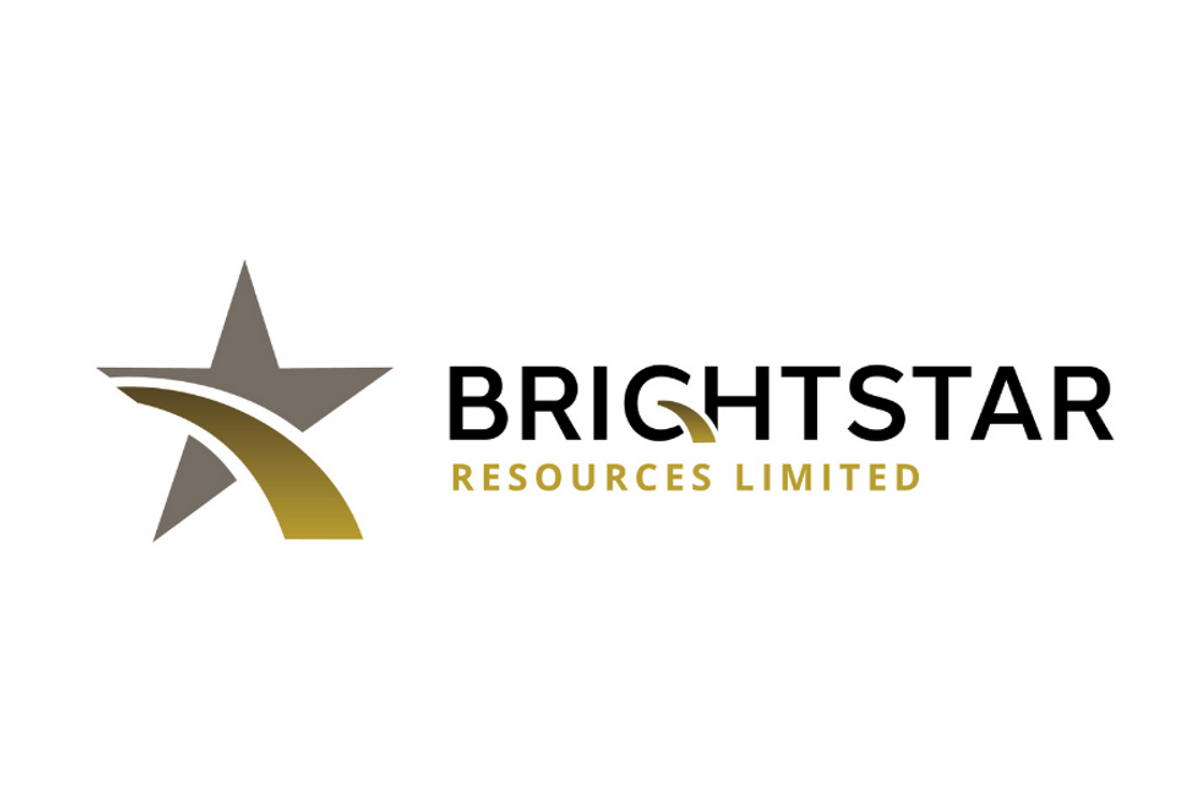
March 20, 2024
Brightstar Resources Limited (ASX: BTR) (Brightstar) is pleased to announce that following on from the maiden and second gold pours announced 07/03/20241 and 12/02/20242, all processing of the ore from the Selkirk joint venture has successfully been completed at Genesis Minerals’ Gwalia processing plant.
HIGHLIGHTS
- Brightstar has successfully finalised its gold pours from ore processing of Selkirk material from the Menzies Gold Project, with a total of 430.7kg of gold doré poured
- Total preliminary unreconciled ounces produced of 8,049.6oz exceeds the modelled JV budget for Selkirk and highlights the quality of Brightstar’s Menzies Gold Project
- Positive reconciliations of ore mined, head grade and metallurgical recoveries exceeded Brightstar’s expectations
- Total joint venture costs are being finalised and are expected to be approximately $12 - $13 million
- Refining of the gold doré is ongoing at the Perth Mint, after which all metals refined will be sold and the revenue will be generated to the JV on a 50/50 Profit Share
- The first 28 gold doré bars have been refined and sold at the Perth Mint, with 5,546 ounces sold at A$3,306/oz for $18M revenue generated under the joint venture
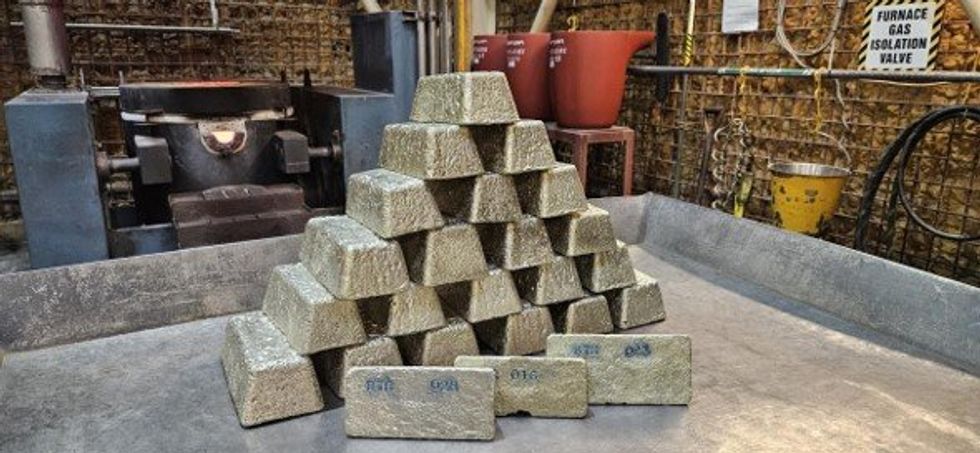
Brightstar advises that processing of the remainder of the ore from the Selkirk mining joint venture has successfully completed, with total unreconciled gold production of 8,049.6oz from 43 gold doré bars produced in the campaign.
Final reconciliations of the gold-in-circuit are underway between Brightstar’s independent metallurgists and Genesis Minerals Ltd. With the current AUD gold price trading at approximately A$3,300/oz, the revenue to be generated from the Selkirk mining campaign significantly exceeds the joint ventures model (done at A$2,850/oz) and BTR management expectations due to additional recovered ounces at a higher gold price.
To date, 5,546oz have been sold to the Perth Mint after refining at an average realised sale price of A$3,306/oz.
Final costs for the joint venture are still being finalised and reconciled, and once approved by the joint venture, the net project income will be split 50/50 between Brightstar and our joint venture partner BML Ventures Pty Ltd. Total project costs are expected to be approximately A$12 - $13 million.
Brightstar’s Managing Director, Alex Rovira, commented “We are pleased to announce that gold processing of our Selkirk Mining JV material has safely and successfully concluded by the team at Genesis Minerals Ltd’s Gwalia operation. Their assistance, along with JT Metallurgists acting on behalf of the joint venture, has seen the successful processing of ore from the Menzies Gold project into doré bars poured at record high AUD gold prices.
In parallel with the finalisation of gold-in-circuit calculations, which is expected to occur shortly, we are also finalising the joint venture accounts and making provisions for rehabilitation and waste dump seeding to achieve best practice environmental outcomes.
With the Selkirk Mining JV all but concluded, we continue our focus on building Brightstar into a meaningful gold producer and look forward to updating the market with finalised accounts and announcing the reconciled 50% Profit Share value attributable to Brightstar.”
Click here for the full ASX Release
This article includes content from Brightstar Resources, licensed for the purpose of publishing on Investing News Australia. This article does not constitute financial product advice. It is your responsibility to perform proper due diligence before acting upon any information provided here. Please refer to our full disclaimer here.
BTR:AU

Sign up to get your FREE
Brightstar Resources Investor Kit
and hear about exciting investment opportunities.
- Corporate info
- Insights
- Growth strategies
- Upcoming projects
GET YOUR FREE INVESTOR KIT
The Conversation (0)
19 June
Brightstar Resources
Investor Insight
With multiple catalysts ahead, including resource upgrades, expanded production, and further development of its Laverton, Menzies, and Sandstone hubs, Brightstar Resources presents a compelling investment case in a rising gold market.
Overview
Gold has continued to demonstrate its resilience as a store of value, with prices peaking at US$3,500.05 per ounce, its all-time high. Amid ongoing global economic uncertainty, including inflationary pressures, rising geopolitical tensions, and volatile interest rate environments, investors have turned to gold as both a safe haven asset and a hedge against macroeconomic instability.
Brightstar Resources (ASX:BTR) is strategically positioned to capitalize on this environment as a low-cost, multi-asset gold developer with near-term production potential. The company controls over 1,500 square kilometers of highly prospective ground across three of Western Australia’s most prolific gold belts: the Laverton Tectonic Zone, the Menzies Shear Zone, and the Sandstone Greenstone Belt.
Unlike many junior exploration companies, Brightstar has a key differentiator: it owns a fully permitted, strategically located processing facility near Laverton. This existing infrastructure offers the company a critical advantage, enabling a low-capex restart scenario and faster time to cash flow compared to peers who must first secure permits and fund costly plant construction. This plant is subject of a DFS due for announcement in June 2025.
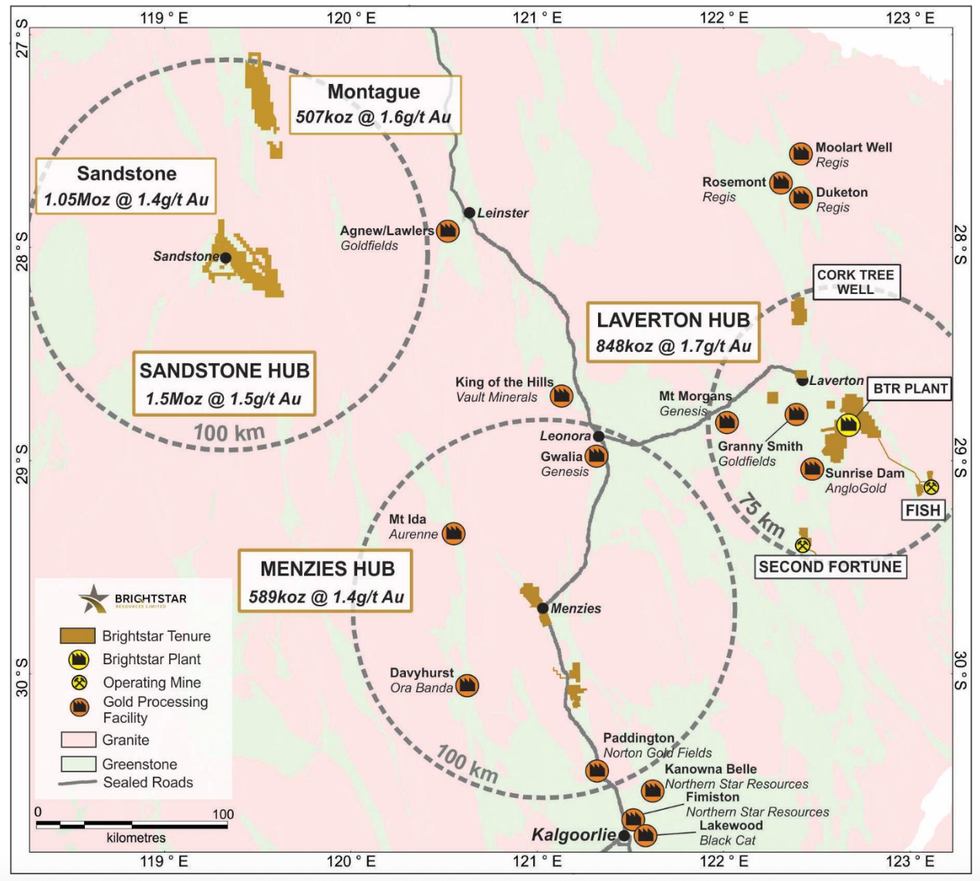
Through a focused multi-hub strategy, Brightstar has built a robust pipeline of development-ready and resource-growth projects, supported by:
- Over 3 million ounces of gold resources across Laverton, Menzies, and Sandstone;
- Ongoing high-grade drilling success in 2024 and 2025, including intercepts of up to 10m @ 43.8 g/t gold;
- A track record of low-cost, value-accretive acquisitions, such as Linden Gold Alliance and Alto Metals;
- A dedicated, in-house technical team executing on aggressive exploration, fast-tracked studies, and staged development.
With global gold demand remaining strong, Brightstar is well-positioned to deliver material shareholder value through its integrated production plan, supported by scalable infrastructure, a growing resource base, and access to capital. The company’s strategic approach includes combining brownfields development, organic exploration, and corporate M&A, placing it at the forefront of a new generation of Australian gold producers.
Company Highlights
- ASX-listed gold exploration and development company with a consolidated mineral endowment of 3 Moz of gold across Laverton, Menzies, and Sandstone hubs in Western Australia.
- Owns and operates 100 percent of project areas: 300 sq km in Laverton Tectonic Zone, 80 sq km in Menzies Shear Zone, and 1,200 sq km in Sandstone Greenstone Belt.
- Gold processing operations at the Laverton facility have commenced under an Ore Purchase Agreement (OPA) with Genesis Minerals Ltd (ASX:GMD), marking a significant milestone in transitioning from exploration to production.
- Recent drilling campaigns have yielded strong high-grade results, including:
- 16m @ 8.0 g/t gold at Second Fortune (Laverton)
- 10m @ 43.8 g/t gold at Musketeer (Sandstone)
- 16m @ 8.0 g/t gold at Yunndaga (Menzies)
- Following the successful Linden Gold Alliance acquisition, Brightstar has commenced a DFS for the wider development of its Laverton and Menzies assets which is due for release imminently in June 2025.
- Ongoing Sandstone drilling continues to return high-grade intercepts, further supporting project advancement and MRE conversion.
- In 2024, Brightstar signed a $4 million drill-for-equity deal with Topdrill to fast-track exploration at Sandstone.
- The company has successfully executed a US$11.5 million (AU$18 million) revolving stockpile finance facility with Ocean Partners Australia.
Key Projects

Laverton Hub
Brightstar’s Laverton hub is comprised of the Cork Tree Well, Jasper Hills, Second Fortune, Beta and Alpha project areas.
Highlights:
- Combined, the Laverton Hub JORC mineral resource estimate is 15.7 Mt @ 1.7 g/t gold for 848 koz (49 percent measured and indicated category). All mineral resources are on granted mining leases
- Cork Tree Well (6.4 Mt at 1.4 g/t gold for 292 koz gold)
- Alpha (1.4 Mt at 2.3 g/t gold for 106 koz gold)
- Beta (1.9 Mt at 1.7 g/t gold for 102 koz gold)
- Lord Byron (5.2 Mt at 1.5 g/t gold for 251 koz gold)
- Fish (376 kt at 4.0 g/t gold for 49 koz gold)
- Second Fortune (92 kt at 13.4 g/t gold for 40 koz gold)
- Gilt Key (168 kt at 1.3 g/t gold for 8 koz gold)
- Main project area Cork Tree Well is open at depth and along strike with recent drilling results of 34.4 meters at 7.94 g/t gold from 43.5 meters (CTWMET004) and 27.6 meters at 17.8 g/t gold from 51 m (CTWMET003)
- Second Fortune has a mineral resource estimate head grade of ~11g/t gold with an average ore body width of 0.6 meters.
- Jasper Hills is located 50 km from Brightstar’s existing processing facility along a wholly-owned private haul road, allowing unimpeded, direct access to both projects
- Permitted, previously mined and production-ready
- Last mined by current owners in 2020 with 23,000 oz gold mined
- Growth Drivers:
- Second Fortune: Consistent, stable production and cash generation through 2025
- Fish: Mining activities have commenced and site establishment is continuing.
- First ore production targeted in June
- Open pits development: Large scale production opportunities through mining Lord Byron and Cork Tree Well as multi-year base load ore sources
- DFS: due for delivery in June 2025, including design and costs for expansion of BTR-owned processing infrastructure to 1Mtpa.
Menzies Hub
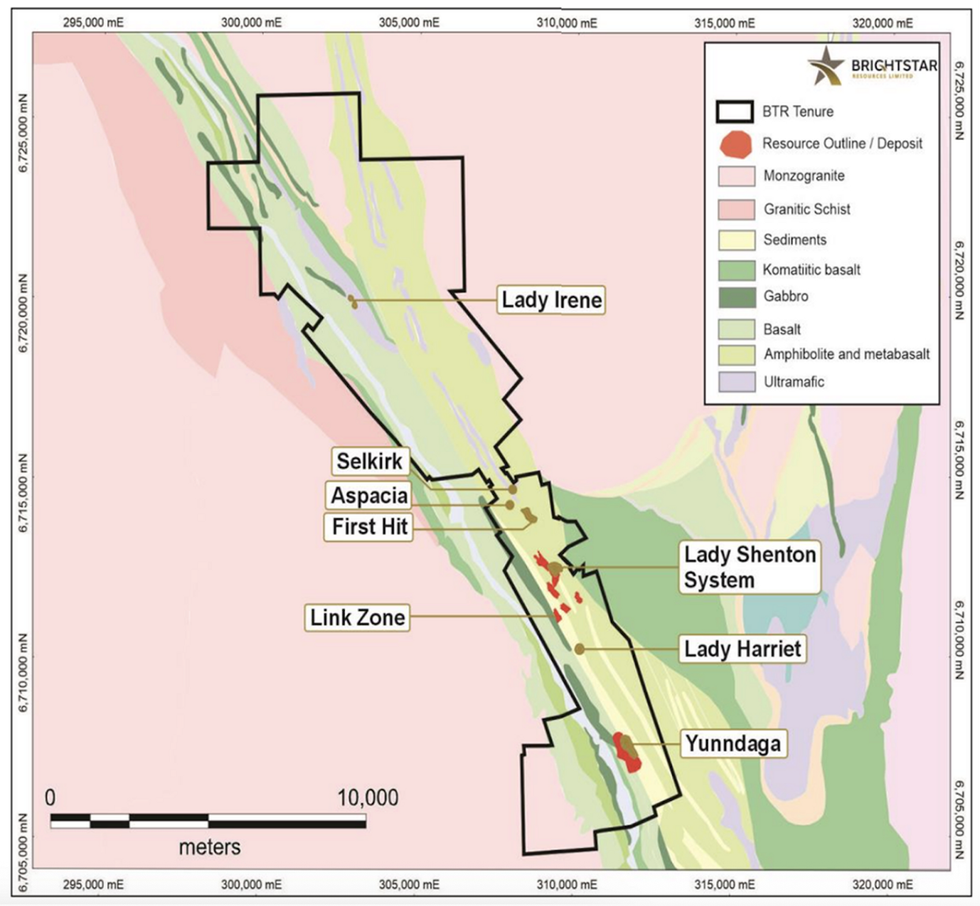
The Menzies Hub comprises a tenement holding of a contiguous land package of granted mining leases over a strike length of more than 20 km. The majority of deposits hosted along the Menzies Shear Zone are located adjacent to the Goldfields Highway in Menzies (130km north of Kalgoorlie).
Highlights:
- Total Current Resource: 12.7 Mt at 1.4 g/t gold for 589 koz gold (37 percent measured and indicated)
- DFS: due for delivery in June 2025, including design and costs for open pit and underground mining for toll processing/ore sales to a regional Kalgoorlie-Menzies mill.
- Growth Drivers:
- Lady Shenton Open Pit: Proposed multi-year consistent open pit production to provide cash generation. Targeting approvals received and ‘mine ready’ in 2025
- Yunndaga Underground: Planned infill drilling targeting conversion of Inferred Mineral Resources to M+I to support inclusion in future mining operations – recent results from this program include 16m @ 8.0 g/t gold
- Development: Advancing discussions with regional mills for 3rd party processing capacity in the Kalgoorlie-Menzies region, targeting a mining decision.
Sandstone Hub
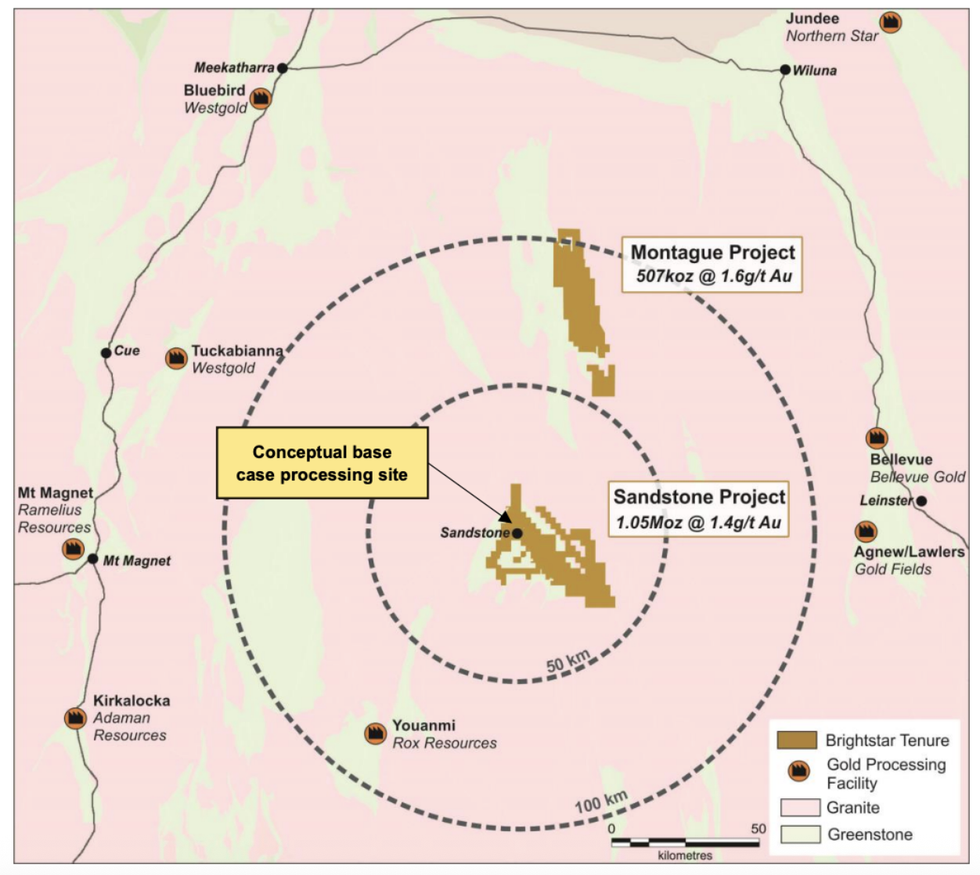
The consolidated Sandstone project is over 100 km from existing third-party milling operations in the Murchison. This third processing hub boasts Alto’s Sandstone project with a mineral resource of 1.05 Moz at 1.4 g/t gold and Gateway’s Montague gold project with a mineral resource of 0.5 Moz @ 1.6 g/t gold.
Growth Drivers:
- Sandstone: Upgrade the Lords, Vanguard, Indomitable and Havilah camps to Indicated classification (40,000m RC+DD)
- Montague: Infill Montague and Whistler to Indicated classification (5,000m RC and 1,200m DD) – RC
- Greenfields: Follow up drilling of priority prospects across Sandstone Hub (West Hacks, Hancocks, Bulchina, Lords Corridor, Duplex) – recent drilling success includes exceptional intercepts at the Musketeer prospect yielding 10m @ 43.8 g/t gold
- Pre-Feasibility Study: Incorporation of 2025 drilling results into MRE upgrades to then factor into 1H 2026 Sandstone PFS
Management Team
Alex Rovira - Managing Director
Alex Rovira is a qualified geologist and an experienced investment banker having focused on the metals and mining sector since 2013. Rovira has experience in ASX equity capital markets activities, including capital raisings, IPOs and merger and acquisitions.
Richard Crookes - Non-executive Chairman
Richard Crookes has over 35 years’ experience in the resources and investments industries. He is a geologist by training having previously worked as the chief geologist and mining manager of Ernest Henry Mining in Australia.
Crookes is managing partner of Lionhead Resources, a critical minerals investment fund and formerly an investment director at EMR Capital. Prior to that he was an executive director in Macquarie Bank’s Metals Energy Capital (MEC) division where he managed all aspects of the bank’s principal investments in mining and metals companies.
Andrew Rich - Executive Director
Andrew Rich is a degree qualified mining engineer from the WA School of Mines and has obtained a WA First Class Mine Managers Certificate. Rich has a strong background in underground gold mining with experience predominantly in the development of underground mines at Ramelius Resources (ASX:RMS) and Westgold Resources (ASX:WGX).
Ashley Fraser - Non-executive Director
Ashley Fraser is an accomplished mining professional with over 30 years experience across gold and bulk commodities. Fraser was a founder of Orionstone (which merged with Emeco in a $660-million consolidation) and is a founder/owner of Blue Cap Mining and Blue Cap Equities.
Jonathan Downes - Non-executive Director
Jonathan Downes has over 30 years’ experience in the minerals industry and has worked in various geological and corporate capacities. Experienced with gold and base metals, he has been intimately involved with the exploration process through to production. Downes is currently the managing director of Kaiser Reef, a high grade gold producer, and non-executive director of Cazaly Resources.
Dean Vallve – Chief Development Officer
Dean Vallve holds technical qualifications in geology & mining engineering from the WA School of Mines, an MBA, and a WA First Class Mine Managers Certificate. Vallve was previously in senior mining and study roles at ASX listed mid-cap resources companies Hot Chili (ASX:HCH) and Calidus Resources (ASX:CAI).
Nicky Martin – Chief Financial Officer
Nicky Martin is an experienced finance and accounting professional holding tertiary qualifications in accounting and finance and is a qualified CPA. Martin was previously the Head of Finance at Pilbara Minerals Ltd (ASX:PLS) where she oversaw and was actively involved in a rapidly growing mining success story.
Keep reading...Show less
Emerging gold producer and district-scale resource developer in Western Australia
02 July
High grade gold in early stage drilling at Sandstone
30 June
Merger Discussions Between Brightstar and Aurumin
29 June
Menzies and Laverton Gold Projects Feasibility Study
8h
Targets Defined for Maiden Drill Program
8h
Quarterly Activities and Cashflow Report
9h
Aircore Doubles Lighthorse Strike Prompts RC Drilling
11h
Adrian Day: Gold Price Drivers Stacking Up, Any Pullback a Chance to Buy
Adrian Day, president of Adrian Day Asset Management, shares his latest thoughts on gold.
He also discusses the opportunity in gold stocks, saying that while as a group they're up 55 percent in last year, valuation metrics are lower than they were two years ago.
Don't forget to follow us @INN_Resource for real-time updates!
Securities Disclosure: I, Charlotte McLeod, hold no direct investment interest in any company mentioned in this article.
Keep reading...Show less
11h
Gold Price Update: Q2 2025 in Review
After soaring to all-time highs during the first quarter of 2025, how could gold follow up during Q2?
By setting new price records, of course.
Tariff threats, financial uncertainty and geopolitical tensions all fueled the yellow metal's price rise during the second quarter of the year, which saw gold reach the US$3,500 per ounce mark for the first time.
While central banks continued to make gold purchases during the period, so too did retail investors, who shied away from US treasuries in favor of a more tangible safe-haven asset class.
What happened to the gold price in Q2?
Gold had an impressive run during the first quarter of the year, steadily rising from US$2,658.04 on January 2 to US$3,138.24 on April 2, leaving investors to wonder how much more gas was available for Q2.
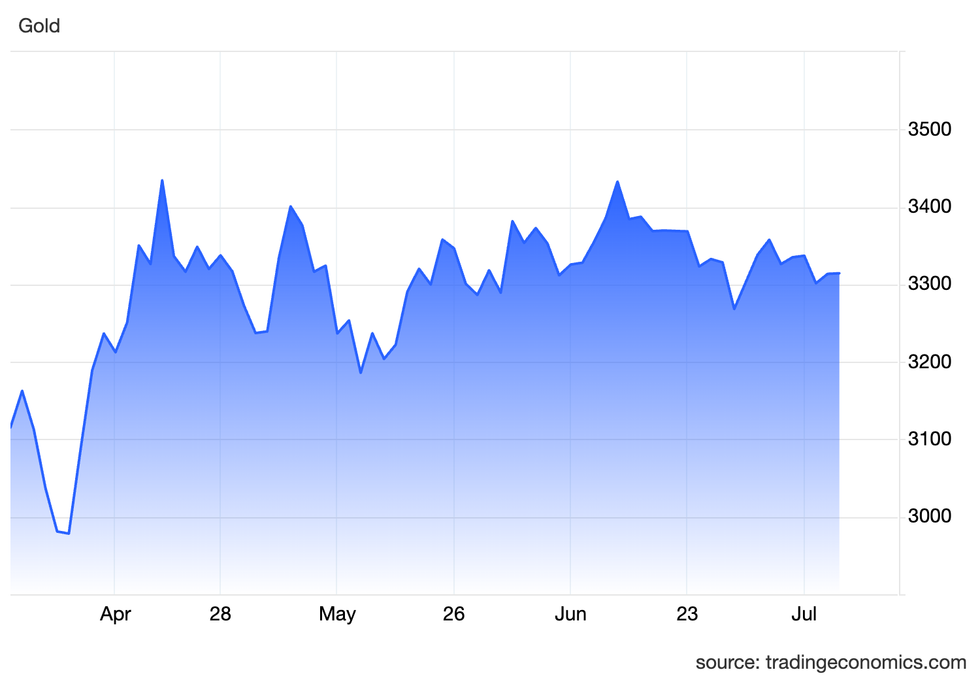
Gold price, April 1 to July 10, 2025.
Chart via Trading Economics.
The price of gold started the second quarter on a downswing, falling below the US$3,000 mark by April 8, but quickly found momentum and soared to its quarterly high of US$3,434.40 on April 21.
It broke through the US$3,500 threshold briefly during the day’s trading session.
However, the gains were temporary, and gold once again fell; by May 1, it had dropped to US$3,237.30.
The metal saw a slight rebound to US$3,400.70 before the May meeting of the US Federal Reserve, but it came under pressure after that and had fallen to US$3,185 by May 14.
The end of May saw more tailwinds for the gold price, pushing it first to US$3,358 by May 23, then to US$3,381.70 by June 2. By the middle of the month, it was back to trading above US$3,400. Since that time, the precious metal has remained mainly above the US$3,300 level, closing the quarter at US$3,303.30 on June 30.
Tariff uncertainty helps boost gold price
The biggest story from the first quarter has carried over into the second quarter: tariffs.
Since the start of his second term in the Oval Office, US President Donald Trump has applied the threat of tariffs like a cudgel in trade talks with other countries. His long-held belief is that other nations, even longtime allies, are benefiting from trade with the US, while the US itself is facing detrimental effects.
During the first quarter of the year, the Trump administration levied tariff threats against Canada and Mexico. While most of his promised import fees were dialed back at the eleventh hour, a 25 percent tax was still applied to imports of Canadian steel and aluminum, as well as non-CUSMA-compliant automobiles and parts.
On April 2, Trump announced a broader set of tariffs on nearly every country in the world, regardless of trade status with the US. Dubbed “Liberation Day” by Trump, the executive order applied a baseline 10 percent fee to all imports from most countries to the US, plus significant reciprocal measures against countries with the largest trade deficits.
The new measures, set to be implemented on April 9, created panic among investors, causing a global market meltdown. Fear also spread to US debt holders, such as Japan and Canada, which began to sell US treasuries, pushing up the 10 year bond yield. Spooked investors rapidly flocked to gold, pushing the price to record highs above US$3,400.
In a June 19 interview with the Investing News Network (INN), Chris Temple, founder, editor and publisher of the National Investor, explained why the increasing bond yields drove gold prices higher.
“The bond market understands that Washington is so broken and the debt situation is so bad," he explained. "It varies in degrees compared to other countries, but everybody’s in the same boat. That’s why gold all of a sudden … gold is the safe haven now, even more than treasuries. And I don't think a lot of people every thought they'd see that again."
Ultimately, the stock market turmoil and the shift in bond market sentiment brought about a quick reversal from Trump, who paused his tariff plans for 90 days. Although the gold price showed signs of easing as market participants calmed, the metal remained high through the end of the quarter as uncertainty remained near the surface.
The pause was set to expire on July 9, but the White House announced a last-minute extension delaying the implementation of the tariffs on all but 14 countries, including Japan, South Korea and South Africa.
However, there are still underlying concerns.
The US-China trade war, which raged through much of the first half of the year, was put on hold on May 12 after tariffs between the two largest economies reached their peak, adding headwinds to the gold price. Up to that point, the US had levied a 145 percent import tax on Chinese goods while China had applied a 125 percent tax on US imports.
Although tensions have stabilized since the pause, on July 7, China warned the US against reigniting conflicts. China also said it would retaliate against any country that makes deals with the US to China’s detriment.
Geopolitical tensions erupt in the Middle East
Financial uncertainty was a key driver of the gold price through the second quarter as investors sought to diversify their portfolios amid a chaotic investment landscape, but it wasn’t the only factor.
Geopolitical tensions also played a significant role, particularly in the Middle East.
With the Israel-Gaza conflict now past 18 months, the larger fear was that it would spill into a broader regional war.
Those fears were stoked in late May, when there was speculation that Israel was preparing to attack nuclear facilities in Iran. The news helped pull gold out of monthly lows as more investors sought the safety of the metal.
Ultimately, the speculation was true — on June 12, Israel launched attacks against key nuclear sites in Iran, causing Iran to launch counterattacks against targets in Israel and providing further tailwinds for the gold price.
What's driving demand for gold?
Other support for the gold price came from continued purchases from central banks.
According to World Gold Council data, central banks bought 244 metric tons of gold in Q1. The amount was 24 percent higher than the five year quarterly average, but 9 percent lower than the average from the last three years.
In an email to INN, Julia Khandoshko, CEO of Mind Money, attributed the central bank buying to geopolitical tensions and trade issues, but also to relative weakness in the US dollar.
“A weaker US dollar, which has declined about 11 percent year-to-date, has made gold more attractive. With expectations of Fed rate cuts lowering real yields, gold became even more attractive as a non-yielding asset,” she said.
The largest first quarter gold buyers were the National Bank of Poland, which added 49 metric tons of the metal to its holdings, increasing its total to 497 metric tons. This was followed by the People’s Bank of China, which purchased 13 metric tons, bringing its reported gold reserves to 2,292 metric tons
In another report, the World Gold Council indicates that despite high prices, central banks continued to buy gold in May, albeit at a slightly reduced pace, with a net 20 metric tons entering their reserves.
But it’s not just central banks that are picking up gold.
“In the past, there has been relatively little involvement, even to now, from western retail investors in this move. This has been overwhelmingly led by central banks and large funds,” Temple said.
However, he noted a shift in buying on the back of wider interest, pointing to gold's popularity at Costco Wholesale (NASDAQ:COST), although he noted, "So far, this hasn’t moved the needle significantly."
Temple added, “Traditionally the big needle mover when you’ve got these larger swings in markets and market sentiment has come from investors who are buying exchange-traded funds (ETFs) and buying the larger gold stocks, and then ultimately working their way down the food chain and buying the better exploration stories. We finally started in recent months to see some of that where it's deserved. There have been some really nice moves."
This idea is echoed in the World Gold Council’s June ETF report, which indicates that ETF flows ended the first half of 2025 with the highest semiannual inflows since the first half of 2020.
The North American movement led the way, with more than US$4.8 billion entering the market in June, bringing the total for the first half of the year to US$21 billion. This was followed by US$2 billion in inflows in Europe, with its first half total reaching US$6 billion. Asian markets added US$610 million with a first-half record of US$11 billion.
Gold price forecast for 2025
The expectation is that the factors that drove the gold price in H1 are unlikely to go away soon.
Trump continues to kick the tariff question down the road. And although a ceasefire has been called between Israel and Iran, tensions in the region are still high. The conflict between Russia and Ukraine is ongoing, with Russia escalating attacks at the start of July, to the point of invoking Trump’s ire.
In an interview with INN on June 16, Jeffrey Christian, managing director at CPM Group, said he doesn’t see a typical summer ahead for the price of gold. He explained:
“We were thinking that by the time you got into June, July, August, not only would you have some seasonal weakness, but you’d also have a situation where financial markets might have calmed down and taken a less pessimistic outlook to the economy, simply because the initial shock of Trump policies was in there and had been digested. What we’re seeing is a prolongation of that shock period."
Financial uncertainty and conflicts were a theme echoed by Kandoshko.
She pointed to the July 9 — now August 1 — deadline for tariffs as a potential inflection point.
“This could spark another rally in gold prices if trade tensions escalate. I have a feeling that the existing tariffs will gradually push prices up, which might lead the Fed to hold off on cutting rates. In the grand scheme of things, higher inflation is likely to boost gold demand, especially from central banks,” Kandoshko said.
She also believes a weak US dollar will likely be a boon for gold, making it more attractive to overseas buyers.
Don't forget to follow us @INN_Resource for real-time updates!
Securities Disclosure: I, Dean Belder, hold no direct investment interest in any company mentioned in this article.
Editorial Disclosure: The Investing News Network does not guarantee the accuracy or thoroughness of the information reported in the interviews it conducts. The opinions expressed in these interviews do not reflect the opinions of the Investing News Network and do not constitute investment advice. All readers are encouraged to perform their own due diligence.
Keep reading...Show less
12h
Finding Gold: Exploring New Zealand’s Next Big Discovery
Despite its rich mining legacy, New Zealand remains one of the most underexplored frontiers for gold in the developed world. Now, with advanced exploration tools and a new generation of explorers, the country is emerging as a hotbed of untapped investment opportunity.
Modern exploration activities and promising geologies across the country may offer indications of where New Zealand’s next big gold discovery could be.
Golden legacy
New Zealand's gold-mining history dates back to the 19th century, with historic rushes in Otago and the Coromandel regions. Two standout deposits have cemented the country's credentials — the Martha mine near OceanaGold's (TSX:OGC,OTCQX:OCAND) Waihi operations, and the Macraes mine in Otago, also operated by OceanaGold. Macraes is the country’s largest active gold mine, producing more than 5 million ounces since 1990. Meanwhile, the Martha underground mine continues to yield ore from epithermal gold-silver veins that were first mined in the 1880s.
These cornerstone projects reflect two dominant geological settings in New Zealand: orogenic gold systems in Otago and epithermal deposits in the North Island. Yet despite this foundation, much of the country's gold-rich terrain remains untouched by modern exploration.
Leveraging underexplored regions
New Zealand’s reputation as a politically stable, low-risk jurisdiction makes it a compelling place for mineral exploration. But it is the vast areas of underexplored ground that are drawing fresh interest.
In particular, Southland and Central Otago have emerged as areas of growing excitement. These southern regions are underlain by the same prospective terranes as the Macraes deposit but have seen limited drilling and modern geophysical work. Sparse population, favorable land access and existing infrastructure further bolster their potential.
These multiple factors — geology, infrastructure and technology — make a compelling proposition for these regions as the likely location for the next generation of new gold discoveries.
Today’s explorers in New Zealand are armed with advanced geophysical surveys, structural modeling and machine learning algorithms that help refine drill targeting and reduce risk.
Companies like Rua Gold (CSE:RUA,OTCQB:NZAUF), Santana Minerals (ASX:SMI) and New Age Exploration (ASX:NAE) are leading the charge. Rua is targeting high-grade epithermal systems in the North Island.
Santana has seen encouraging drill results at its Rise and Shine project in Otago. Meanwhile, NAE is focused on Central Otago and is applying new tools to revisit overlooked terrain.
Investment spotlight: New Age Exploration
NAE is strategically building a district-scale gold exploration presence in New Zealand, underpinned by advanced technical execution and an experienced board. Its focus spans two highly prospective regions: the Otago South gold project and the Marlborough project — both located within historically mineral-rich but underdrilled terrains.
The Otago project lies within the Otago Schist Belt — home to the Macraes mine — a region widely regarded as one of New Zealand’s most underexplored playgrounds for orogenic gold. NAE holds a substantial tenement package exceeding 1,000 square kilometers, covering a contiguous stretch that incorporates priority targets such as Lammerlaw, Otago Pioneer Quartz (OPQ) and Manorburn. These areas were selected based on historic workings, strong soil and rock-chip geochemistry, as well as structural/geophysical anomalies indicative of Macraes-style mineralization.
At Lammerlaw, the company completed five reverse circulation holes (totaling 458 meters) in its maiden drilling program. The campaign successfully intersected sulfide-mineralized shear zones and quartz veining typical of high-grade schist-hosted systems. These results align with regional structural trends, and NAE has prudently secured EP 61110 (Waipori) to expand control along the same structural corridor. Results from this first-phase drilling are pending, with a planned Phase 2 drilling campaign slated for early 2026 — targeting newly defined or previously inaccessible zones.
The broader Otago package also includes the OPQ project, which hosts a 6 kilometer gold-bearing shear zone with surface rock-chip grades exceeding 1.4 grams per tonne gold, and the recent addition of the Manorburn permit (approximately 222 square kilometers) adjacent to Santana Minerals’ Bendigo-Ophir discovery, further expanding NAE’s control to approximately 558 square kilometers in the Otago schist belt.
To complement Otago’s high-grade potential, NAE also secured the Marlborough project, encompassing 499 square kilometers within the Marlborough Schist Belt, considered a structural analogue to Otago but previously underexplored. This project diversifies NAE’s exposure and supports a multi-pronged gold discovery strategy.
Driving NAE’s strategy is chairman Alan Broome AM, a highly regarded figure in the Australian mining industry with more than four decades of experience across mining, technology and government advisory roles. A former director of multiple ASX-listed resource companies, Broome brings deep insight into project development and strategic leadership.
Complementing this is a superb local technical team led by Kerry Gordon, a New Zealand-based geologist with extensive experience in Otago-style gold systems, and James Pope, a structural geologist with a deep understanding of the region’s mineralization controls.
Investor takeaway
With New Zealand on the verge of new and significant gold discoveries, investors looking to evaluate early-stage success in the country’s exploration sector should watch for:
- High-resolution geophysical anomalies aligned with shear zones or known fault systems.
- Soil or rock chip assays that detect gold pathfinders like arsenic, antimony or tungsten.
- Drill intercepts with visible sulfide mineralization or quartz vein textures.
- Permit expansion and land consolidation, which point to long-term development strategy.
- Teams with clear communication and technical expertise — an area where NAE stands out.
With favorable geology, strong project economics and world-class leadership teams, New Zealand is quickly becoming a global focus for orogenic and epithermal gold exploration. For investors seeking discovery-stage exposure with substantial upside, early mover explorers may be writing the next great chapter in the country's gold story.
This INNSpired article is sponsored by New Age Exploration (ASX:NAE). This INNSpired article provides information which was sourced by the Investing News Network (INN) and approved by New Age Exploration in order to help investors learn more about the company. New Age Exploration is a client of INN. The company’s campaign fees pay for INN to create and update this INNSpired article.
This INNSpired article was written according to INN editorial standards to educate investors.
INN does not provide investment advice and the information on this profile should not be considered a recommendation to buy or sell any security. INN does not endorse or recommend the business, products, services or securities of any company profiled.
The information contained here is for information purposes only and is not to be construed as an offer or solicitation for the sale or purchase of securities. Readers should conduct their own research for all information publicly available concerning the company. Prior to making any investment decision, it is recommended that readers consult directly with New Age Exploration and seek advice from a qualified investment advisor.
Keep reading...Show less
Latest News

Sign up to get your FREE
Brightstar Resources Investor Kit
and hear about exciting investment opportunities.
- Corporate info
- Insights
- Growth strategies
- Upcoming projects
GET YOUR FREE INVESTOR KIT
Latest Press Releases
Related News
TOP STOCKS
American Battery4.030.24
Aion Therapeutic0.10-0.01
Cybin Corp2.140.00

